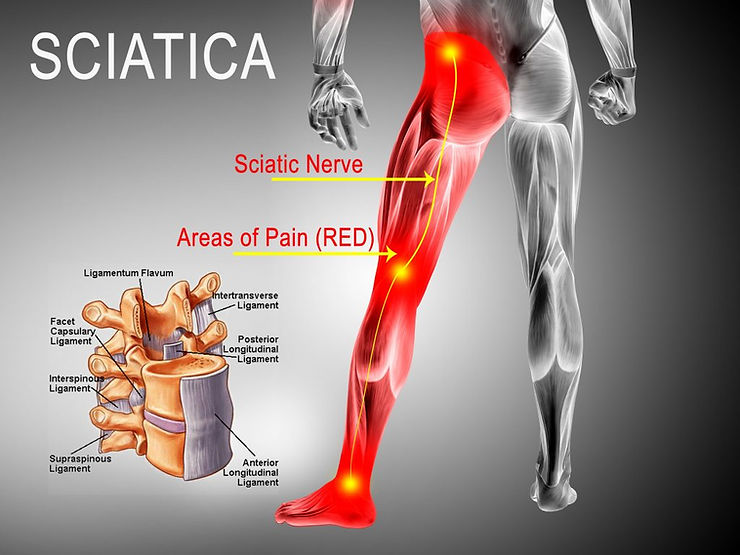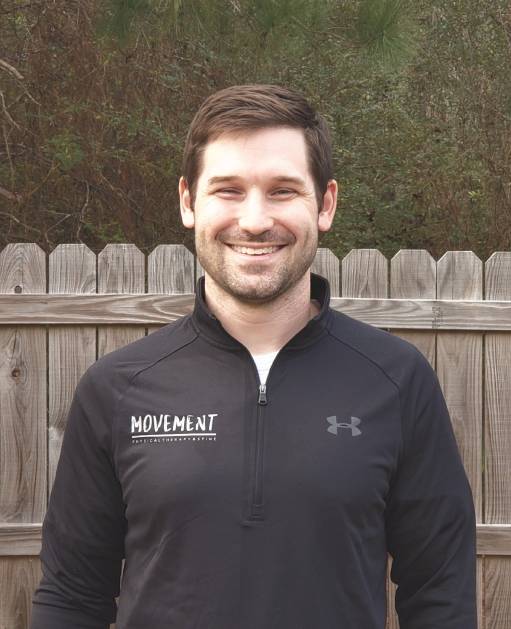Below are some of the most common mistakes that the average person and even many health-care providers (including physical therapists) get wrong when trying to treat sciatica pain.
1. Thinking You Have “Piriformis Syndrome”
True Piriformis Syndrome is a very uncommon condition where the sciatic nerve is compressed by the piriformis muscle as it passes through the buttock region. In reality, the vast majority of sciatica cases result from compression or irritation to the spinal nerve as it passes out of the spinal column and then into the leg.
This confusion leads many suffering with sciatica pain to try and treat the area of pain (the buttock or leg) rather than the actual source of the pain (the low back). Unfortunately, this leads to only temporary relief, at best, with gradually worsening pain over time.
2. Incorrect Support When Sitting
Many people suffering with sciatica will place a cushion for support underneath their buttocks when sitting. While this can provide temporary relief of the pain to some degree, again, it fails to get to the true source of the issue.
When sitting, any radiating sciatica pain has more to do with the position of your low back than anything else. When the spine is in a slouched/rounded position for extended periods it can cause irritation to the nerves that exit your low back and travel down your legs.
Therefore, rather than trying to cushion your bottom, next time you sit, do so on a firm, supportive surface that will allow you to sit upright and avoid slouching. Better yet, place a small pillow in the hollow of your low back to provide extra support and watch how the pain begins to subside!
3. Trying to Work Out the “Knot” in Your Buttocks Using a Tennis Ball or Foam Roller
You may be noticing an unfortunate pattern emerging with the common mistakes people make with sciatica—treating the symptom rather than the source of the pain. Anyone trying to work out a “knot” in their buttocks using a tennis ball or foam roller is missing the mark. As a result they will only obtain temporary relief of the pain as the problem continues to get gradually worse over time.
4. Performing Stretches in the Wrong Direction
As mentioned in tip #2, the level of sciatica pain you are feeling has more to do with the position of the low back than anything else. The vast majority of sciatica-suffers will be worse when the spine is placed in positions of excessive lumbar flexion (rounding out the low back).
This commonly occurs when sitting, driving, bending forward to put on your shoes or pick something off the floor, and when sleeping on your side in the “fetal position.” Unfortunately, a quick google search for “sciatica stretches” will bring up a LONG list of exercises that place you into these very same positions! Once again, resulting in temporary relief, at best, while the underlying spinal problem continues to get worse.
5. Thinking that Rest, Heat, Ice or Meds Will Fix the Problem
It is true that heat, ice and medications may help you reduce some acute sciatica pain but these will again only be temporary measures. But rest, on the other hand, may be one of the worst courses of action you can take. This will only lead to more pain and stiffness.
The key for you is movement, not rest. But more accurately, it is movement in the right direction.
As mentioned before, your sciatica pain will be most often worsened with activities or postures which round out your low back. Therefore, to feel better you must practice regularly moving in the opposite direction (ie. “extension”).
A basic way to begin working on stretches into extension is to lay on your stomach in the “sphinx” position. With that being said, there are countless other methods for doing so and the safest and most effective place to begin is to consult with a qualified Doctor of Physical Therapy to assess which method would be right for you.
6. Trying to Fix It On Your Own
As hopefully you have been able to gather from the above information, there are a lot of ways you can go wrong when trying to self-treat your sciatica. It is simply a confusing and often-times misunderstood topic, even among healthcare professionals, and therefore, is nearly impossible to navigate alone.
There is no faster way to END nagging sciatica pain than by seeing a qualified Doctor of Physical Therapy. If you’re ready to get started, click one of the links below so that we can get you on the road to feeling good again!
~ Dr. Dallin Page


